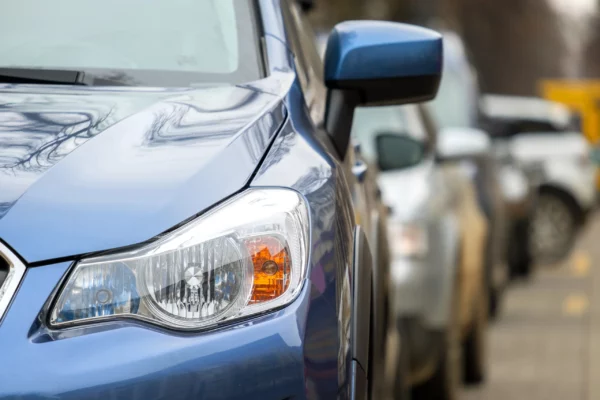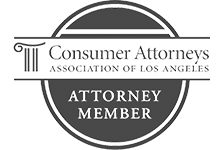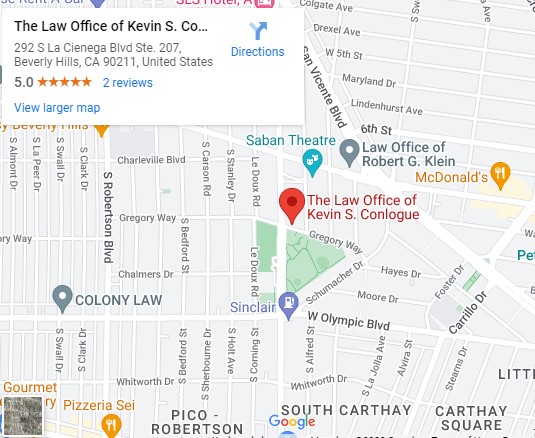Legal Support and Guidance in Understanding California’s Headlight Laws
As the sun goes down and darkness falls over California, it becomes more and more clear how important it is for vehicles to have working lights. Headlights serve as the eyes of a vehicle, illuminating the road ahead and ensuring the safety of both drivers and pedestrians. Understanding and adhering to California’s headlight laws is not just a legal requirement; it is a crucial element in promoting road safety and preventing accidents.
Headlight laws are regulations that govern the proper use and functionality of vehicle headlights on the road. These laws vary from state to state and are designed to ensure safety for drivers, passengers, and pedestrians. Headlight laws cover a range of aspects, including when headlights must be used, the types of headlights allowed, and specifications for headlight brightness.
Quick Summary
- California’s Headlight Laws are essential for road safety, serving as regulations that govern proper headlight use and functionality.
- The laws cover key aspects, including when headlights must be used, allowed types, brightness specifications, color requirements, and proper functioning.
- Motorcycle headlights have specific requirements, including an always-on requirement, brightness standards, color restrictions, proper aim, and alignment.
- Improper use of headlights poses dangers like reduced visibility, blinding oncoming traffic, and increased vulnerability of pedestrians and cyclists.
- The use and condition of headlights can significantly impact personal injury cases, influencing factors such as negligence, comparative fault, establishing fault, nighttime accidents, and duty of care.
From the basic requirements for headlights to special considerations for specific driving conditions, this article aims to provide clarity on California’s headlight laws. So, fasten your seatbelt, adjust your mirrors, and let’s embark on a journey through the regulations that keep California’s roads well-lit and secure for all who traverse them.
What Are California’s Headlight Laws?
California’s Headlight Laws outline specific regulations and requirements regarding the use of headlights on vehicles within the state such as having at least two headlamps. These laws are designed to enhance road safety by ensuring proper visibility for drivers and minimizing the risk of accidents. Here are the key points regarding California’s Headlight Laws:
Sunset to Sunrise Operation
Vehicles must use headlights from sunset to sunrise, as well as during any other conditions that reduce visibility, such as fog, rain, or snow. This is crucial for enhancing visibility on the road and preventing accidents during low-light conditions.
Visibility Requirements
Headlights must be turned on when visibility is less than 1,000 feet ahead. This includes scenarios where drivers cannot see objects or other vehicles within this specified distance. Ensuring proper visibility is vital for avoiding collisions and maintaining overall road safety.
High Beam Usage
Drivers must switch to low-beam headlights when approaching an oncoming vehicle within 500 feet or when following another vehicle within 300 feet. This regulation is in place to prevent blinding oncoming drivers and reduce the risk of accidents caused by impaired visibility.
Headlight Color
California law mandates that headlights must emit a white light. Colored headlights, other than those with a slight blue tint, are generally prohibited. This ensures uniformity in lighting standards and prevents confusion or distractions on the road.
Headlight Height
The height of a vehicle’s headlights is regulated to prevent excessive glare for oncoming drivers. Headlights must be mounted between 22 and 54 inches above the ground, contributing to a standardized and safe distribution of light on the road.
Proper Functioning
All vehicles must have functioning headlights that emit a sufficient amount of light. Non-functional or improperly adjusted headlights can reduce visibility and pose a hazard to the driver and others on the road. Regular maintenance and prompt repair of faulty headlights are essential for compliance with these regulations.
Headlight Modifiers
The use of modifiers, such as tinted covers or films, that alter the color or intensity of the headlights is generally prohibited. These modifiers can compromise the effectiveness of headlights, diminishing visibility and increasing the likelihood of accidents.
By understanding and following California’s Headlight Laws, as drivers, you contribute to a safer road environment, reduce the risk of accidents, and promote overall traffic safety in the state.
Motorcycle Headlights
Motorcycle headlights are of particular importance in terms of safety, visibility, and compliance with traffic regulations. Here are some key aspects related to motorcycle headlights and their impact on safety and legal considerations:
Always-On Requirement
California motorcycles are required to have their headlights on at all times, both during the day and at night. This is known as a “universal daytime headlight use” law and is intended to increase the visibility of motorcycles to other road users.
Number of Headlights
Motorcycles are typically required to have at least one functional headlight. Some motorcycles may have multiple headlights, but at least one must be operational.
Headlight Brightness
Headlights must meet certain brightness standards outlined in the California Vehicle Code. The intensity of the light emitted must be within specified limits to ensure visibility without causing undue glare for other road users.
Color of Light
Headlights must emit a white or yellow light. The use of colored lights other than white or yellow may be restricted, especially when visible from the front of the motorcycle.
Proper Aim and Alignment
Ensuring that motorcycle headlights are properly aimed and aligned is essential. Misaligned headlights can create glare for oncoming drivers and may reduce their effectiveness in illuminating the road ahead for the motorcycle rider.
Auxiliary Lighting
Some motorcycle riders install additional lighting, such as auxiliary lights or LED strips, for increased visibility. While these can be beneficial, it’s important to ensure that they comply with local regulations to avoid distractions or glare that could contribute to accidents.
Headlight Modulation Systems
Motorcycles may be equipped with a headlamp modulation system that alternately flashes the upper beam, under certain conditions.
What are the Dangers of Improper Headlights?
Improper use of headlights can introduce various dangers on the road, affecting the safety of the driver, passengers, and other road users. Here are some dangers associated with improper headlights:
- Reduced Visibility: Failure to use headlights during low-light conditions, such as at night or during adverse weather, can significantly reduce a driver’s ability to see the road ahead. This increases the risk of collisions with obstacles, pedestrians, or other vehicles.
- Limited Recognition by Other Drivers: Insufficient or improper use of headlights makes it more difficult for other drivers to recognize and react to a vehicle. This can lead to misjudgments of distance, making it challenging to navigate traffic safely.
- Blinding Oncoming Traffic: Using high beams inappropriately or failing to switch to low beams when required can blind oncoming drivers. This sudden glare can cause temporary loss of vision and create hazardous situations, especially on narrow or winding roads.
- Failure to Signal Intentions: Headlights serve as a means of communication on the road. Improper use, such as not signaling intentions through headlight flashes, can lead to confusion among other drivers and pedestrians, potentially resulting in accidents.
- Distraction and Glare: Additional lighting accessories, like bright aftermarket bulbs or improperly installed LED lights, can cause distraction and glare for other drivers. This can lead to decreased visibility and reaction time, increasing the risk of accidents.
- Inability to Gauge Speed and Distance: Incorrect headlight alignment or failure to use headlights appropriately can make it difficult for drivers to accurately gauge the speed and distance of other vehicles. This lack of information can contribute to unsafe driving conditions.
- Non-Compliance with Traffic Laws: Failure to comply with headlight laws, such as not using headlights during required periods or using prohibited colors, can result in legal consequences. This may include fines, penalties, or traffic violations on the driver’s record.
- Increased Vulnerability of Pedestrians and Cyclists: Insufficient visibility due to improper headlights increases the risk of accidents involving pedestrians and cyclists, who may be less visible to drivers. This can lead to collisions and pose a greater threat to vulnerable road users.
Proper use of headlights is crucial for creating a safe driving environment for everyone on the road. Drivers need to understand and adhere to headlight regulations, ensure proper headlight maintenance, and avoid modifications that may compromise the effectiveness of headlights.
Headlights Laws and Personal Injury Case
The use and condition of headlights can have a significant impact on personal injury cases, especially those involving motor vehicle accidents. Here are some ways in which headlights can influence the outcome of such cases:
Visibility and Negligence
If a driver fails to use headlights when required, such as during low-light conditions or inclement weather, it may be considered negligent behavior. Negligence can be a key factor in personal injury cases, and the failure to use headlights properly may contribute to establishing liability.
Comparative Fault
The concept of pure comparative fault in California may apply. If a plaintiff (injured party) is found to be partially responsible for the accident, their recovery may be reduced. Proper use of headlights can be a factor in determining whether a plaintiff bears any responsibility for the accident.
Establishing Fault
The condition and functionality of headlights can be crucial in establishing fault in an accident. For example, if a driver’s headlights were not working properly or were improperly modified, it might contribute to determining liability.
Nighttime Accidents
In accidents that occur at night, the use of headlights becomes even more critical. If a driver failed to use headlights during nighttime hours and this contributed to the accident, it could be a crucial factor in determining negligence.
Proving Duty of Care
The use of headlights is often seen as a part of a driver’s duty of care. If a driver fails to meet this standard, it could strengthen the argument that they breached their duty, leading to a higher likelihood of being found negligent.
Documentation and Evidence
Properly functioning and well-maintained headlights are essential for a vehicle’s safety. Documentation of the condition of headlights, such as through photographs, repair records, or witness statements, can serve as valuable evidence in personal injury cases.
Visibility of Pedestrians and Bicyclists
Headlights are not only important for the driver’s visibility but also for the visibility of pedestrians and bicyclists. In cases involving these vulnerable road users, the use of headlights becomes crucial in preventing accidents and establishing the duty of care.
Government Regulations
Compliance with headlight laws and regulations is a factor in determining whether a driver acted reasonably. Non-compliance with these regulations may strengthen the argument for negligence.
The use, condition, and compliance with headlight regulations can play a significant role in personal injury cases. Proper use of headlights may demonstrate adherence to the duty of care, while failure to use or maintain them appropriately may contribute to negligence and liability.
Let’s Help You Navigate California’s Headlight Laws Today!
In navigating California’s complex headlight laws, one cannot underscore the importance of understanding, complying, and, when necessary, addressing violations with diligence. At the heart of road safety, these laws form the backbone of responsible driving in the Golden State.
Conlogue Law LLP recognizes the significance of legal compliance on the road. As advocates for safe driving practices, we emphasize the need for drivers to not only be aware of headlight laws but also to appreciate the implications of non-compliance. Whether it’s fixing a violation or seeking legal guidance, responsible action is key.
Whether you are dealing with a car wreck, a motorcycle crash, a truck collision, or another vehicular accident, let Conlogue Law LLP be your partner in understanding and navigating the legal landscape. Contact us today for a free consultation!








